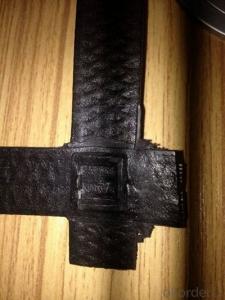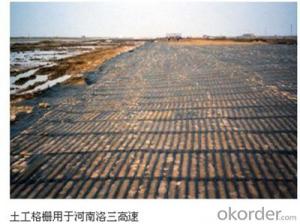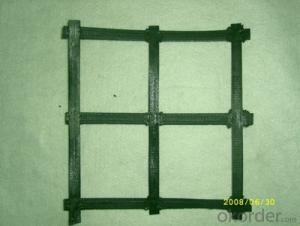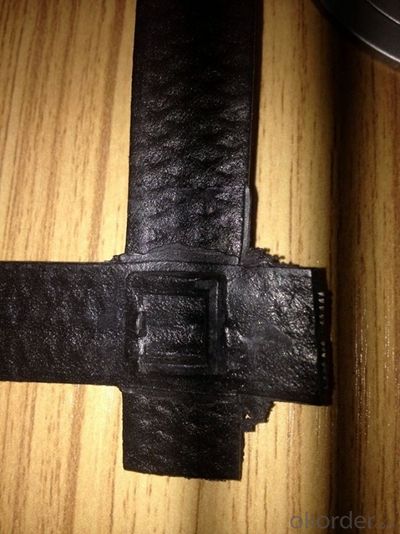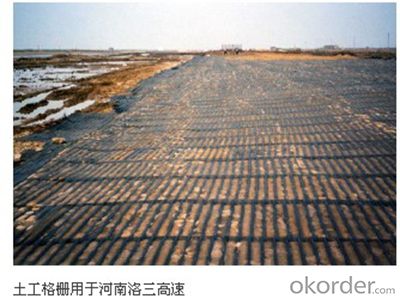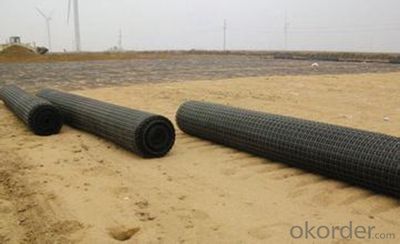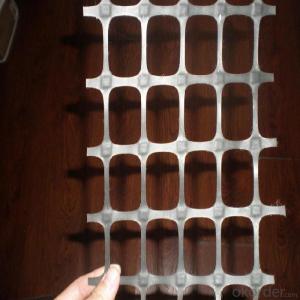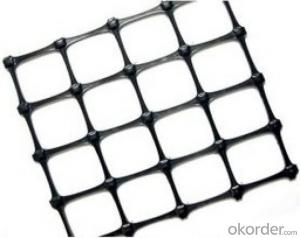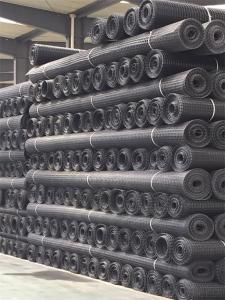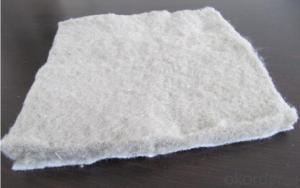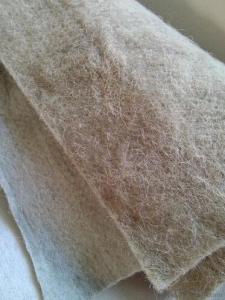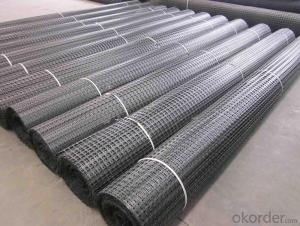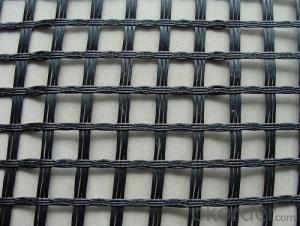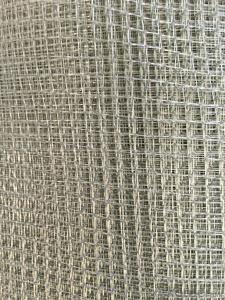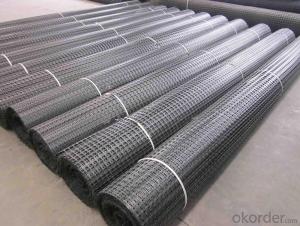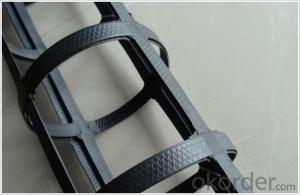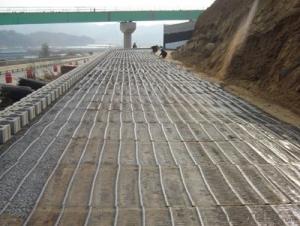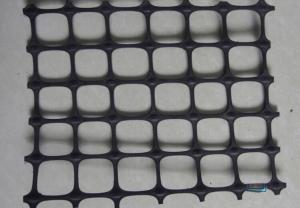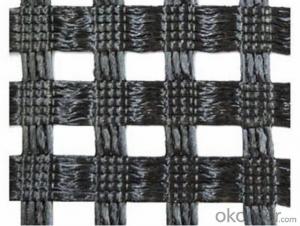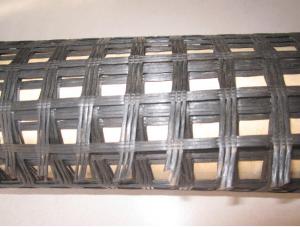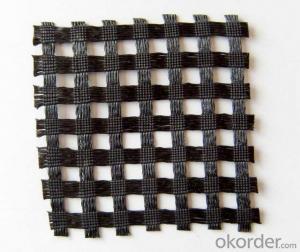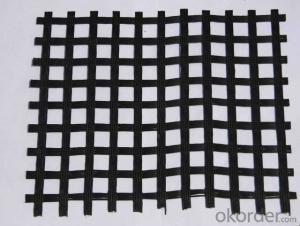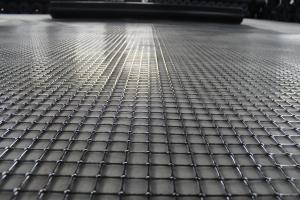Geogrids Manufactured - Fiberglass Steel-Plastic Composite Geogrid for Coal Mine
- Loading Port:
- Tianjin
- Payment Terms:
- TT OR LC
- Min Order Qty:
- 88 m²
- Supply Capability:
- 1800000 m²/month
OKorder Service Pledge
OKorder Financial Service
You Might Also Like
Structure of Fiberglass Geogrid description :
Made of GE fiber by weaving technology and coating treatment, it can bear high tensile strength .This material has considerable tensile strength in longitudinal and lateral directions. This chain structure can effectively bear and diffuse forces on soil and is applicable to large area permanent load bearing foundation as a reinforce.
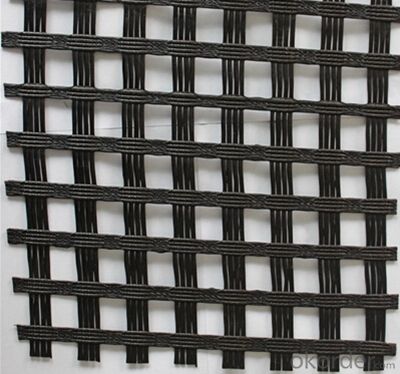
Features of Fiberglass Geogrid for coal mine:
High strength ,low elongation, heat resisitant, high modulus ,light weight, good flexibility,anti-erosion,
Application of of Fiberglass Geogrid for coal mine :
Make reinforce treatment for various of soft soil foundation to evenly distribute load stress and reduce unevensettlement , it is easy to wash coal . used in highway ,railway,port,airport, municipacl and projects of supporting in the recovery working face of coal mined and ladeway in the coal mine .
Specification of Fiberglass Geogrid for coal mine
25-25KN,30-30KN,50-50KN,80-80KN,100-100KN,120-120KN
Width : 1M,2M,3M,4M.
Length: 50m,100,
Color: black
Packaging & Delivery of Fiberglass Geogrid for coal mine Each roll is wrapped in a woven bag then into container Or Packed as customers' requests.
Production periods of Fiberglass Geogrid for coal mine : within 10 days after receiving the deposit
Introduction of CNBM
China National Building Materials (Group) Corporation (CNBM) is a state-owned enterprise in charge of administrative affairs in China building materials industry. Established in 1984, CNBM is a large group corporation of building materials with total assets of RMB 25 billion and a total staff of 30,000. Now CNBM owns more than 200 subsidiaries in and abroad the country, including wholly-owned corporations and joint ventures.
FAQ of geosynthetics :
What is geosynthetics ?
Geosynthetics form a perfect erosion control fabric used extremely widely in civil engineering to stabilize and reinforce slopes and soil under or next to roads, railways, dams, water reservoirs etc.. They can be easily applied which minimizes the time of construction, as well as they limit the resources and materials necessary.
What kinds of geosynthetics we have ?
Non-woven geotextile, geogrids, geocells, GCL, Geomembranes, Geonets, Geocomposites etc .
What is the geosynthetics used for ?
Hydraulic
Lagooning and Water Treatment, Ornamental Ponds, Golf Courses
Aquaculture and Desalination,Water Lagoons,Tanks, Reservoirs, Liquid Waste,Floating Cover Solutions, Drainage and Filtration
Environment
Tailing ponds, Leach mining,Landfills,Landfill Capping,Protection against corrosion,Vertical Barriers
Civil Works
Erosion Control,Secondary Containment,Tunnels,Linear and Surface Works,Consolidation of Margins,Soil Reinforcement,Soil Separation.
Building - Parkings,Roofing,Soundproofing
- Q: What is the meaning of two-way 50kN geogrid
- Biaxial plastic stretching geogrid in JT/480-2002
- Q: What is a geogrid?
- A geogrid is a type of geosynthetic material made of polymer or fiberglass that is used to reinforce soil or other materials in civil engineering projects. It is commonly used to increase the strength and stability of retaining walls, slopes, and roadways by distributing the load and preventing soil movement.
- Q: What are the installation methods for geogrids?
- Geogrids can be installed using various methods such as direct placement, mechanical connection, and soil reinforcement techniques. Direct placement involves laying the geogrid directly on the subgrade or soil surface. Mechanical connection refers to connecting the geogrid to existing structures or other geosynthetic materials using fasteners or anchors. Soil reinforcement methods involve embedding the geogrid within the soil to enhance its tensile strength and stability. The choice of installation method depends on the specific project requirements and the desired outcome.
- Q: How do geogrids improve the performance of mechanically stabilized slopes in high rainfall areas?
- Geogrids improve the performance of mechanically stabilized slopes in high rainfall areas by providing reinforcement and enhancing the stability of the soil structure. They act as a barrier against soil erosion and prevent slope failures by distributing the load more evenly. Additionally, geogrids increase the bearing capacity of the soil, reduce settlement, and improve overall slope stability, making them highly effective in managing the increased water flow and potential slope movement in high rainfall areas.
- Q: Dimensions of U shaped steel nails for geogrids
- Hello, U shaped steel nail size 80*3 mm
- Q: How do geogrids enhance the stability of embankments?
- Geogrids enhance the stability of embankments by providing reinforcement and structural integrity. They are installed within the soil layers of the embankment to distribute the applied loads and increase the overall strength of the structure. Geogrids also help to prevent soil erosion and lateral movement, reducing the risk of slope failures and improving the long-term stability of the embankment.
- Q: What is the road geogrid
- brief introductionGeogrid: GeogridGeogrid is a kind of main geosynthetics, which has unique properties and effects compared with other geosyntheticsGeogrid is often used as reinforcement of reinforced soil structure or composite materialGeogrid is divided into four categories: plastic geogrid, steel plastic geogrid, fiberglass geogrid and polyester warp knitted polyester geogrid
- Q: What are the differences between geogrids and geocells?
- Geogrids and geocells are both geosynthetic materials used in civil engineering applications, but they have some key differences. Geogrids are typically flat, grid-like structures made of polymer materials such as polyester, polypropylene, or fiberglass. They are used to provide tensile strength and stability to soil and aggregate materials. Geogrids are commonly used for soil reinforcement, slope stabilization, and retaining wall construction. They are installed by laying them on the surface or embedding them within the soil. On the other hand, geocells are three-dimensional honeycomb-like structures made of high-density polyethylene (HDPE) or polypropylene (PP). Geocells are used for soil confinement and erosion control. They are primarily used to create stable and load-bearing structures on weak or unstable soils. Geocells are installed by expanding and interconnecting them to form a cellular network, which is then filled with soil, aggregate, or other materials. In summary, the main difference between geogrids and geocells lies in their structure and application. Geogrids provide tensile strength and stability to soil, while geocells offer soil confinement and erosion control capabilities.
- Q: What are the design considerations for geogrids in reinforced soil slopes?
- Some of the key design considerations for geogrids in reinforced soil slopes include the selection of appropriate geogrid material and strength, determining the required spacing and orientation of the geogrid layers, considering the slope geometry and stability requirements, evaluating the soil properties and potential for settlement and deformation, assessing the long-term durability and performance of the geogrids, and ensuring adequate constructability and installation techniques. Additionally, factors such as water drainage, environmental conditions, and cost-effectiveness should also be taken into account during the design process.
- Q: How do geogrids enhance the stability of steep railway embankments?
- Geogrids enhance the stability of steep railway embankments by providing reinforcement and confinement to the soil. They are placed within the embankment, creating a strong and stable structure that can withstand the forces of gravity and lateral movements. Geogrids distribute the load more evenly, reducing the risk of slope failure and erosion. Additionally, they improve the shear strength of the embankment, preventing soil movement and ensuring long-term stability.
Send your message to us
Geogrids Manufactured - Fiberglass Steel-Plastic Composite Geogrid for Coal Mine
- Loading Port:
- Tianjin
- Payment Terms:
- TT OR LC
- Min Order Qty:
- 88 m²
- Supply Capability:
- 1800000 m²/month
OKorder Service Pledge
OKorder Financial Service
Similar products
Hot products
Hot Searches
Related keywords
